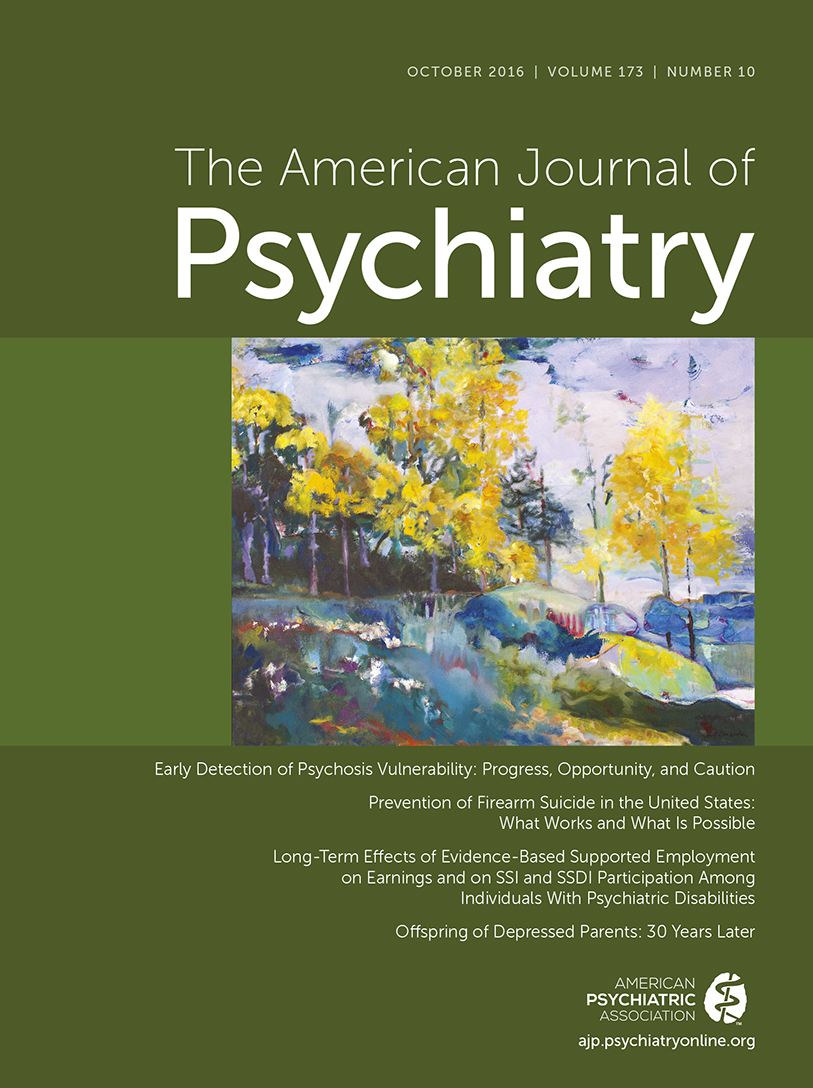Antidepressant Efficacy and Dosing Comparisons of Ketamine Enantiomers: Response to Hashimoto
To the Editor: We thank Dr. Hashimoto for commenting on our recent article (1) in which we demonstrated sustained antidepressant efficacy following repeated intravenous dosing of racemic ketamine (0.5 mg/kg). We also are grateful to Dr. Hashimoto for providing us the opportunity to address the issues raised. Dr. Hashimoto states that the R-enantiomer of ketamine shows greater potency and longer-lasting antidepressant effects than the S-enantiomer of ketamine in presumptive rodent models of depression. He further cited his findings that repeated administration of S-ketamine caused loss of parvalbumin immunoreactivity in the prefrontal cortex of mouse brain, and on the basis of these findings, suggested that repeated infusions with ketamine or S-ketamine may “have long-lasting detrimental side effects in the human prefrontal cortex.” Dr. Hashimoto concludes that the R-enantiomer may be a better alternative as it may be free of side effects.
We do not agree with Dr. Hashimoto’s suggestions regarding the antidepressant efficacy of either racemic ketamine or of S-ketamine in humans with major depressive disorder, and we have not been able to confirm that repeated administration of S-ketamine produces neurotoxicity in rodents. Clinical data from recent studies using S-ketamine have demonstrated a dose-response relationship, as well as a rapid onset and sustained antidepressant effects, in patients with treatment-resistant depression and in depressed patients at imminent risk of suicide:
| 1) | A recent randomized controlled trial (2) showed that intravenous infusion of S-ketamine produced robust antidepressant effects in patients with treatment-resistant depression at dosages of 0.4 mg/kg and 0.2 mg/kg, and the antidepressant efficacy was sustained for at least 2 weeks after the last dosage of 0.2 mg/kg. The effect sizes were large and comparable to those found with racemic ketamine at 0.5 mg/kg in patients with treatment-resistant depression. | ||||
| 2) | An independent randomized controlled trial (3) reported that 28 mg, 56 mg, or 84 mg of intranasal S-ketamine (dosed twice weekly for 2 weeks) with concomitant oral antidepressants demonstrated antidepressant efficacy in an ascending dose-response relationship. Moreover, in patients who participated in an open label extension phase from this trial in which they received seven additional dosages of S-ketamine over 11 weeks, the antidepressant effect was sustained for the 2-month observation period following the last dosage of intranasal S-ketamine. | ||||
| 3) | In a third randomized controlled trial conducted in depressed patients at imminent risk for suicide (4), researchers reported that intranasal S-ketamine at a dosage of 84 mg, along with standard of care antidepressant therapy, showed efficacy that lasted for at least 8 weeks following the final treatment in a series of twice-weekly dosages administered across 4 weeks. | ||||
Moreover, a recent preclinical study from the National Institute of Mental Health showed that a single injection of S-ketamine produced a robust and rapid antidepressant-like effect in a chronic corticosterone administration model of depression and that these effects persisted for weeks (5).
Furthermore, in contrast to Dr. Hashimoto’s suggestion of long-lasting detrimental side effects in the prefrontal cortex of humans, until now animal toxicology studies with single or daily repeated administrations of S-ketamine have not shown any evidence of neurotoxicity. Moreover, in patients with treatment-resistant depression, no deterioration of cognitive function was seen over 3 months of repeated administration of S-ketamine.
It is noteworthy that in most rodent studies, the dosages of ketamine and its enantiomers have ranged from 10 mg/kg to 30 mg/kg, which are much higher than those used in human studies of depression (e.g., 0.5 mg/kg for racemic ketamine, and 0.2 mg/kg and 0.4 mg/kg for S-ketamine). In rodent studies the higher dosages of these agents also have resulted in much higher plasma levels than are obtained in humans at the lower dosages listed above. Thus, caution must be taken when speculating about therapeutic and toxicity outcomes in humans based on rodent data obtained under markedly different dosing regimens.
In conclusion, while the data reported with R-ketamine may suggest antidepressant-like effects in rodent stress models, clinical data in humans using R-ketamine are not yet available. S-ketamine has shown rapid onset and sustained efficacy both in patients with treatment-resistant depression and in patients with major depressive disorder at imminent risk for suicide. The dosages used for S-ketamine usually have been lower than those used for racemic ketamine in treatment-resistant depression and appear to be safe and well tolerated with repeated dosing in humans with mood disorders.
1 : A double-blind, randomized, placebo-controlled, dose-frequency study of intravenous ketamine in patients with treatment-resistant depression. Am J Psychiatry 2016; 173:816–826Link, Google Scholar
2 : Intravenous esketamine in adult treatment-resistant depression: a double-blind, double-randomization, placebo-controlled study. Biol Psychiatry (Epub ahead of print, Nov 3, 2015)Google Scholar
3 : Intranasal esketamine in treatment-resistant depression, a dose response study: double blind and open label extension data. Presented at the 54th annual meeting of the American College of Neuropsychopharmacology, 2015Google Scholar
4 : Esketamine for the rapid reduction of the symptoms of major depressive disorder, including suicidal ideation, in subjects assessed to be at imminent risk for suicide. Presented at the 71st annual meeting of the Society of Biological Psychiatry, 2016Google Scholar
5 : New hippocampal neurons mature rapidly in response to ketamine but are not required for its acute antidepressant effects on neophagia in rats. eNeuro 2016; 3:e0116-15.2016Crossref, Google Scholar



